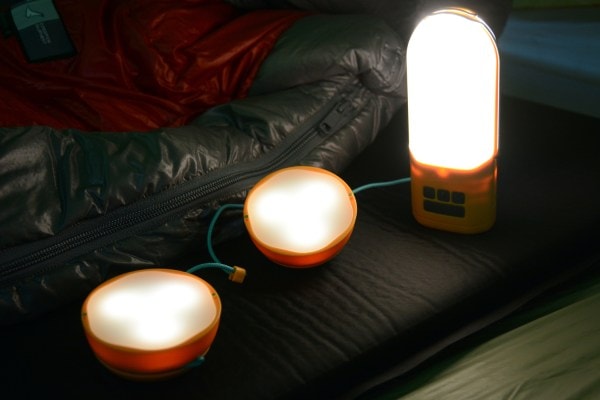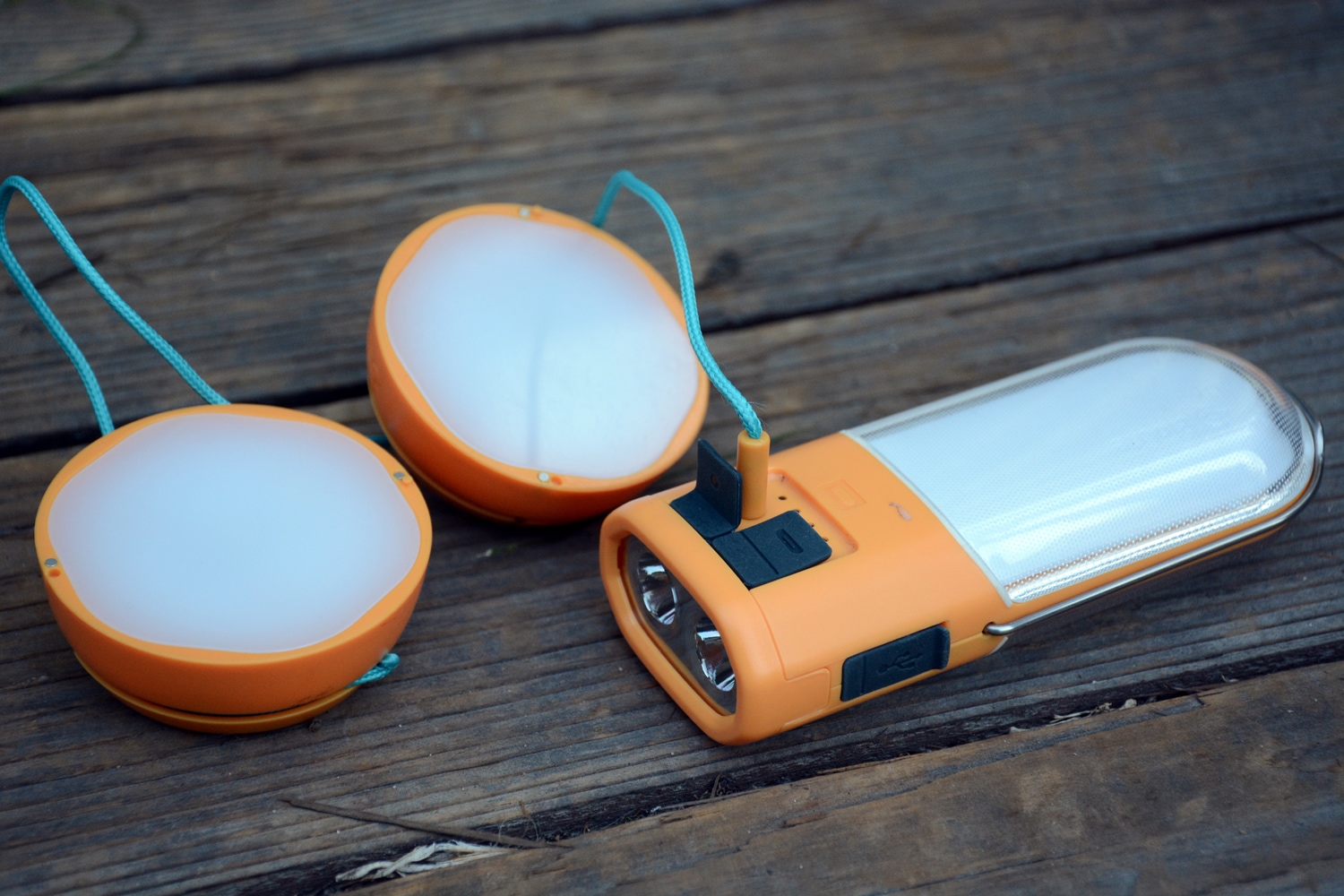With more and more people taking devices into the backcountry that will likely require recharging before the trip’s over, manufacturers are introducing more choices in lanterns that pull double duty as rechargers. Unfortunately, many are too heavy and bulky for backpacking.
But this summer, after using the NanoGrid on a four-day, 34-mile backpacking trip on the Rockwall Trail in Canada’s Kootenay National Park, as well as on a six-day rafting trip down Idaho’s Middle Fork of the Salmon River, I came away convinced that it’s worth its weight in the hours of campsite lighting and hundreds of trip photos it enables.
The NanoGrid is a water-resistant, rechargeable, combination battery/USB charger, and lighting system. There are basically two parts: the handheld 3-in-1 PowerLight hub—lantern, torch (flashlight), and device charger—and the 2 smaller SiteLights, each with a retractable 10-foot cord.

The PowerLight’s 200-lumen lantern and 250-lumen torch operate independently and can be turned on simultaneously. The light can stand upright for lantern mode or hang from a tent ceiling loop, throwing 360 degrees of light. The lantern’s light isn’t harsh—you can look actually directly at it—and yet it easily illuminates the inside of a tent or a campsite within about a 20-foot perimeter before the light gets too dim to be useful. The one-sided lighting option in the lantern is actually very handy when your tentmate is ready for shuteye. The torch is as bright as many flashlights that are twice as heavy, throwing a focused beam as well as a dimmer, wide-area light.
The two remote SiteLights each cast 150 lumens of light over an area of about 10 feet. One SiteLight plugs into the PowerLight and the second plugs into the other SiteLight so you can string them across a campsite. (Additional site lights can be purchased separately and plugged into the setup to create a longer string of lights, obviously draining the battery more quickly.) A separate power button on each site light turns them on/off individually.
You’ll want to practice using the system’s buttons at home before your trip. Pressing the lantern power button once turns on/off both sides of the lantern, twice turns on just one side, three times turns on the flashing mode, and holding the button dims or brightens the light. Similarly, press the torch power button once for on/off, twice for flashing mode, and hold for dimming/brightening. Each lighting mode will turn on at the brightness you last set. The rectangular Quick Light/Lock button turns on the torch (press once) or two-sided lantern (twice), or, by holding the button in for 1.5 seconds, locks/unlocks all buttons off (indicated by the lantern blinking twice in lock mode when pressing any button).
The lithium ion battery recharges via a wall outlet or USB connection in four hours and can charge up to three phones (or one phone three times). The NanoGrid has three ports for charging devices in the backcountry: micro USB, USB and a dedicated 2mm port for the two included SiteLights; all have rubber covers that stay in place, although I found the rubber covers on the SiteLights could be a little tricky to lock into place. While I expect the rubber covers would protect those electrical ports from a light rain, I would not depend on them to protect the unit from water damage in steady rain or if dropped into water.
The lantern has a burn time of seven hours on high and 75 hours on low; the torch on high lasts eight hours, and on low 75 hours. Even after charging one phone, the battery retains enough power for several hours of lighting—meaning it will provide all of its functions through a long weekend of normal use. With the exception of ultralight backpacking, the lantern/charger’s multiple uses justify its weight on many backpacking trips where you’ll want to recharge devices, and certainly on camping and paddling outings.
Shop the BioLite NanoGrid LED Lantern and Portable USB Charger at REI.com.
